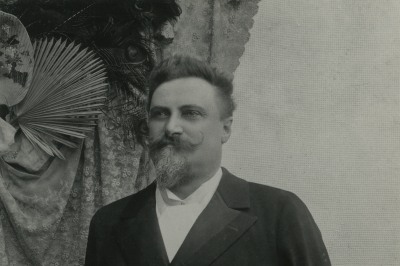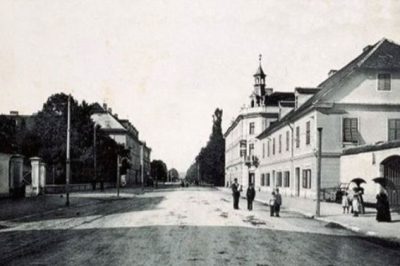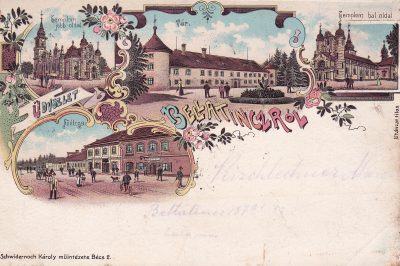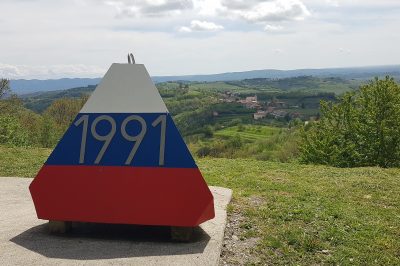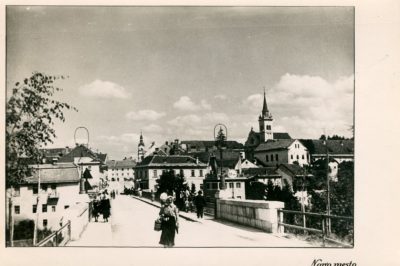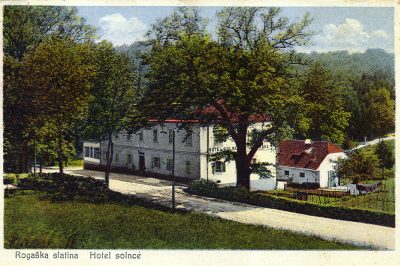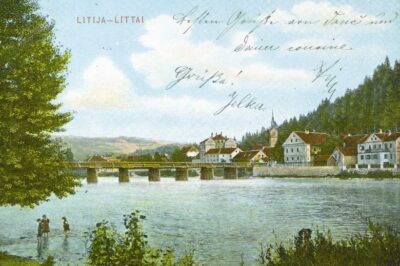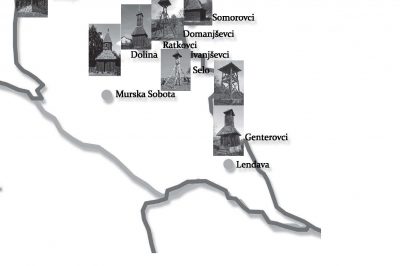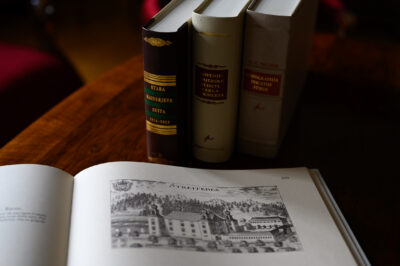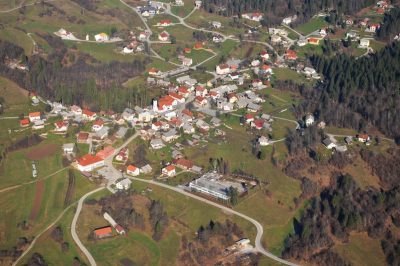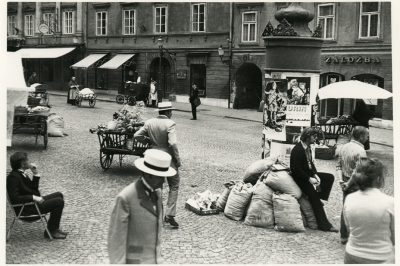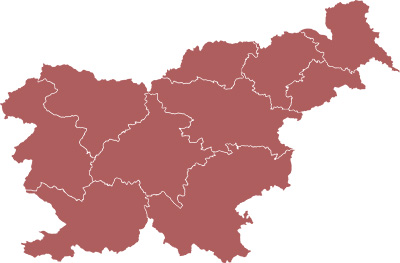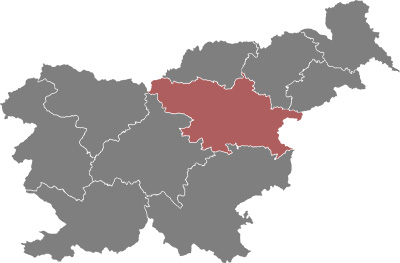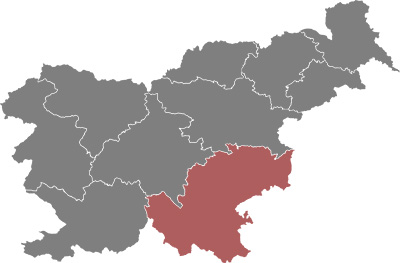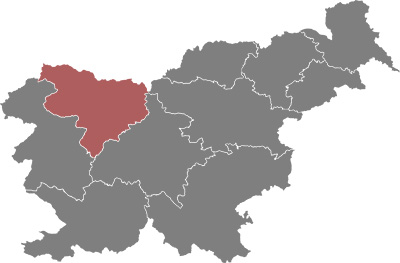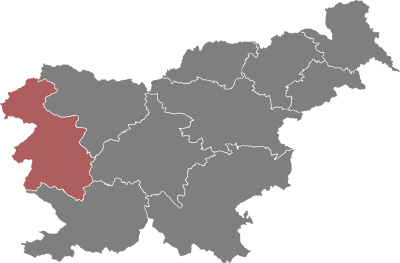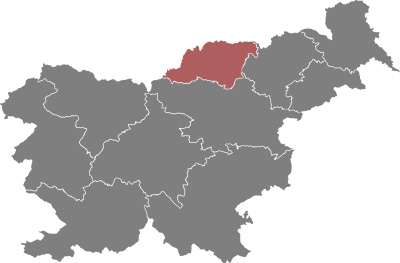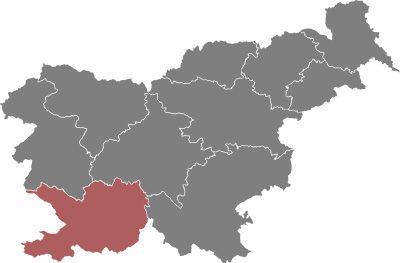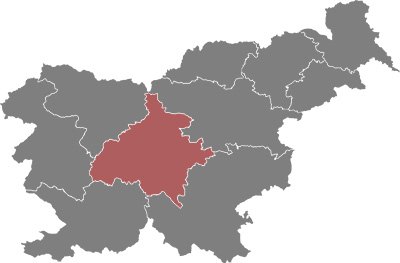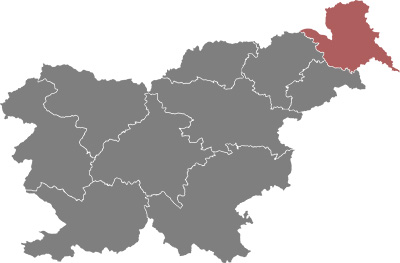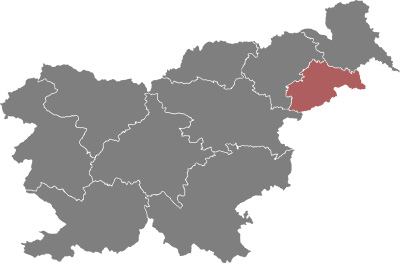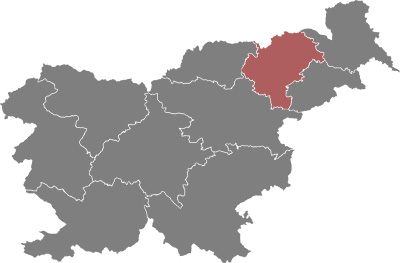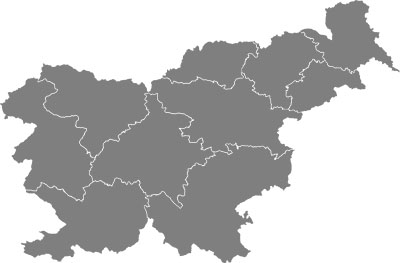Franc Fale (1921–2009) – the ‘father’ of Forma viva in Ravne na Koroškem
It began like this: the famous Slovenian sculptors Jakob Savinšek and Janez Lenassi, who had participated in a similar event in Austria, proposed the creation of Forma viva (sculpture garden) in Slovenia. Their proposal was met with immediate enthusiasm among colleagues and officials responsible for cultural activities in Slovenia at the time. Among the most enthusiastic I should mention Vilma Pirkovič and Lado Smrekar, both originally from the Dolenjska region. Vilma Pirkovič was also the president of the steering committee of Forma viva for several years.
Since wood and stone are widespread in nature in Slovenia and, at the same time, they are very rewarding materials for sculpture, in 1961 the first two Forma viva (literally a ‘living form’) sculpture symposia commenced simultaneously in Kostanjevica na Krki and in Portorož.
And the beginning in Ravne: one afternoon in autumn 1963, I happened to be in Ljubljana – in my capacity as the president of the municipality of Ravne na Koroškem – with Vilma Pirkovič and Lado Smrekar. We talked about various things in the field of artistic activities in Slovenian municipalities, and about the progress of the Forma viva symposia in Kostanjevica na Krki and Portorož. I suggested to my interlocutors that we should initiate another Forma viva, in Ravne, and that it should be based on steel. As I pointed out, steel belongs among the most important materials of modernity and it is very suitable for artistic creation. They were both very enthusiastic about my suggestion and they offered help with the organisation.
Without further ado, I informed Gregor Klančnik, the manager of Železarna Ravne (ironworks) at the time, about this conversation. He was immediately in favour of joining Kostanjevica and Portorož. The rapid development of the ironworks and the town at the time demanded concurrent progress in all areas; hence, Forma viva complemented our cultural activities suitably.
The idea about Forma viva in steel was well received by the relevant services in the municipality and in the self-governing bodies of Železarna Ravne. With the assistance of the republican steering committee and the local organisers, we prepared the first symposium in the ironworks in Ravne in 1964, in which seven sculptors participated. The selection was made by the art council in Ljubljana in collaboration with us.
For the most part, the artists’ creative work took place in the ironworks plants. If needed, factory workers also lent their hand, especially welders, but also others. This is how work was done during all seven symposia organised in Ravne between 1964 and 1989. Within a quarter of a century, thirty beautiful large steel sculptures were created – the work of thirty artists from European and American countries and Japan. The ironworks always made available the material and the tools as well as its labour force, when necessary. The municipal budget covered only a small fraction of the costs.
When Vilma Pirkovič stepped down as the president of the Forma viva steering committee, Dr France Hočevar (vice-president during Stane Kavčič’s administration) took over her role. He was succeeded by sculptor Dušan Tršar, professor at the Academy of Fine Arts in Ljubljana. The presidents of all municipalities in which the symposium took place were members of the steering committee, while the art council was responsible for the contents. Over the years, the most famous Slovenian artists, art critics and architects (Zoran Kržišnik, Luc Menaše, Slavko Tihec, etc.) were involved with the art council.
Another person I need to mention is Dr Sonja Hoyer, who performed the demanding function of conferring with the artists and managing administration in her capacity as the secretary of all Slovenian worksites. Besides, organisation in each participating municipality was managed by local people with enthusiasm and for free. In Ravne, too. There are too many people who participated to be mentioned by name here.
In 1967, in Maribor, another Forma viva, in concrete, came into existence. It ended after four symposia in 1977.
All four sculpture gardens complemented one another nicely. Kostanjevica and Portorož with their use of wood and stone, and Ravne and Maribor with their respective contemporary, man-developed materials – steel and concrete.
It has been known for quite some time that people feel well and comfortable in nice and orderly environments. We invited horticultural experts (Dr Dušan Ogrin) to Ravne to give us advice on how to arrange the greens in the factory and in the residential areas. We started revamping the town’s urban spaces, while the sculptures of Forma viva assumed the function of an aesthetic complement to the greens and the architecturally monotonous residential areas. People accepted them. The appearance of the town and the valley became prettier and culturally more important.
In Ravne, Forma viva was conceived in emphatically free terms. The artists chose what to create, and how to do it, according to their free judgement. They had everything they needed at their disposal. We all loved them. They were welcome everywhere, which is why they felt very comfortable here. They left us with pleasant impressions and they kept sending letters expressing gratitude upon returning to their homes.
By setting up Forma viva in Ravne, in Slovenia, we have proven that we are a country of kind and open people who appreciate artistic creativity of all nations. We are aware of the fact that we live in a very important and, at the same time, very beautiful space – the intersection of three equally great European cultures: the Romance, the Germanic and the Slavic cultures.
I can rightly argue that Forma viva did a good deed in Ravne at the time. Foreign artists came to know us, whereas we were able to see that art also encompasses hard work. We admired the extraordinary diligence of the Japanese as well as other artists. And they carried into the world the town of Ravne and the factory, which is famous for its high-quality steel, from which the artists created their masterpieces. The was a cheap kind of publicity, and yet the best kind there is. And we were left with artworks – the sculptures that complement our neighbourhoods beautifully.
Franc Fale, 1999


